
All-purpose potting soil has been around for quite some time. Its invention changed how we garden. It has made growing plants easy and accessible, whether you have a large plot of land or a small terracotta pot. But the name can be misleading. Is all-purpose potting mixreallyall-purpose? Not where most houseplants are concerned.
Cornell mix
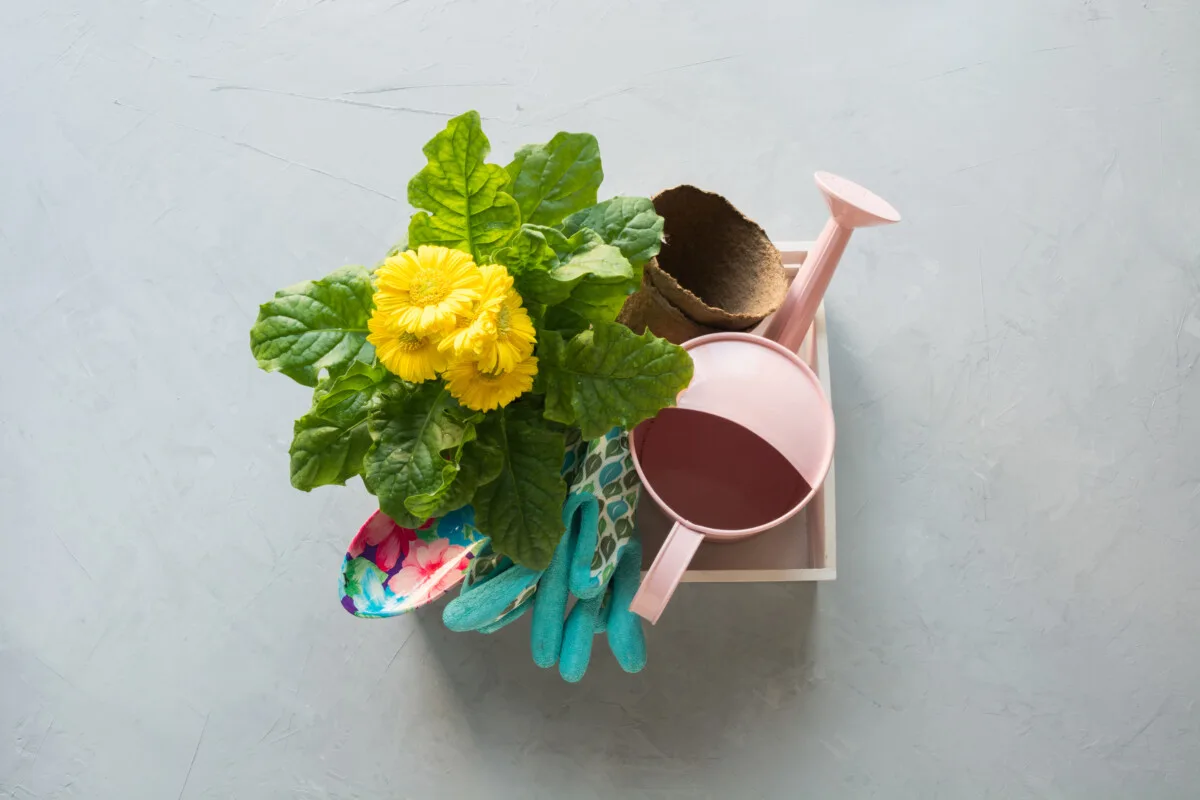
Picture yourself back in the 50s. (Nice hair.) You want to grow a potted gerbera daisy. But there’s no all-purpose potting mix. It hasn’t been invented yet. At least not in the way we know it today.
So, you find some nice loamy soil out in the wild blue yonder. That’s all well and good if you live near a wooded area where the soil has plenty of natural organic matter in it.
But if you don’t have access to good natural soil?
Tough luck; you made do with whatever you could find or hit up a local greenhouse to purchase some of their pre-mixed soil.
Fast forward to the 60s, and an Ivy League school nestled in upstate NY – Cornell University. Horticulturalists James Boodley and Raymond Sheldrake were busy playing in the dirt. Between the two of them, they came up with a light, fluffy potting mix – Cornell Mix – that changed how we garden forever.
The ingredients included a blend of sphagnum peat moss (the main ingredient), vermiculite, ground limestone and a bit of fertilizer.
This potting mix revolutionized home gardening. Suddenly, we had the perfect blend for starting tomatoes and other seedlings. It was light, drained well, yet still retained moisture. Hurrah!
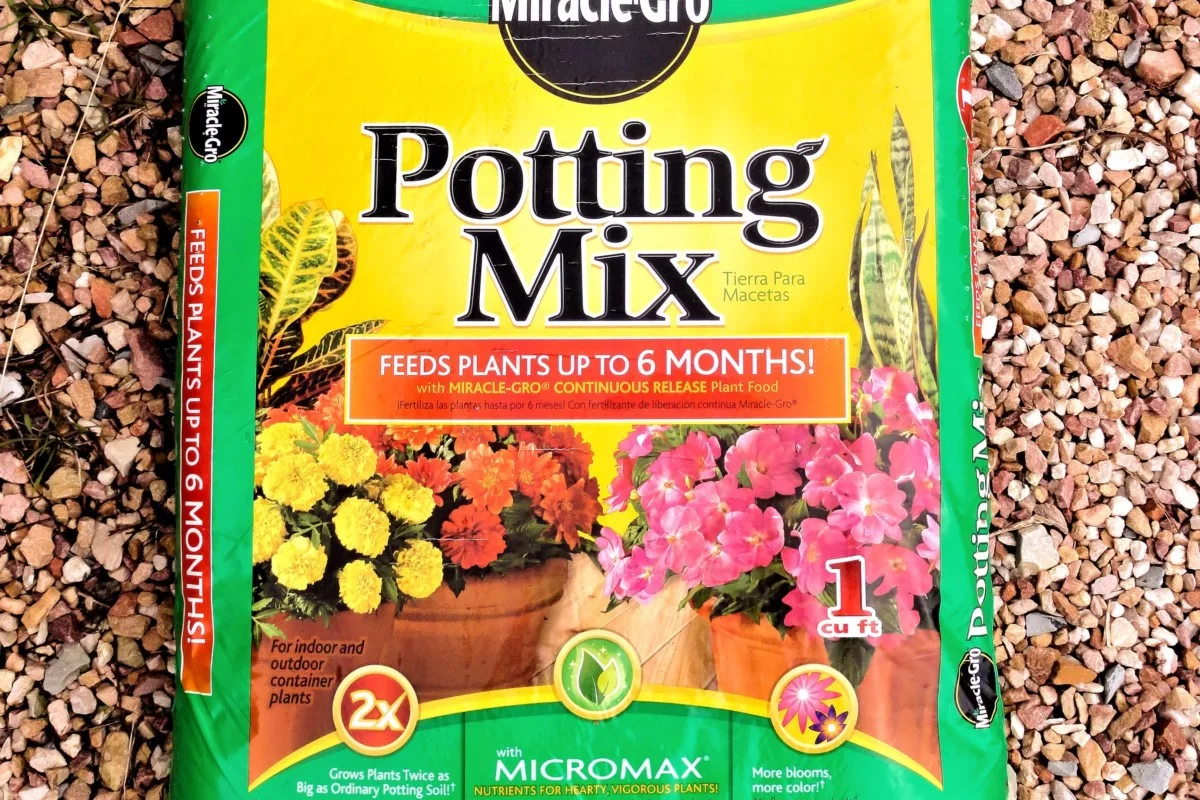
Eventually, what began as Cornell Peat-lite Mix became known as “All-Purpose Potting Mix,” this moniker has been tripping up houseplant enthusiasts for decades. Because when it comes to most houseplants, all-purpose doesn’t cut it.
To Find Out What’s Up – Look Down
All-purpose potting mix, despite the name, was never meant to be used for houseplants. It was created for seedlings and bedding plants. Most of these plants have a highly developed vascular system below the ground.
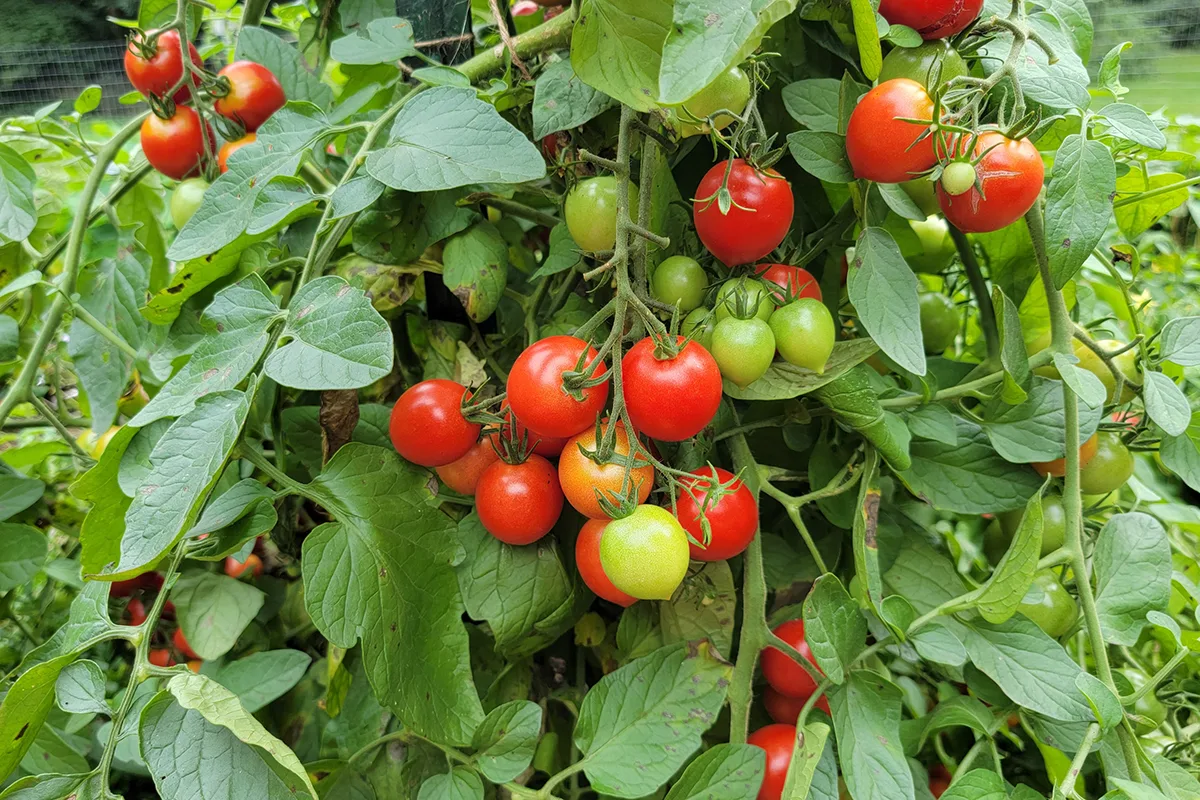
The roots of tomatoes, marigolds, and your potted mint grow deep into the soil, branching out in endless tiny roots to create plenty of surface area for water uptake and nutrients.
Nearly all the lush, green plants we’ve cultivated to be grown as houseplants are grown for their foliage rather than a fruit or flower.
These plants have very different root structures, which are much smaller. In their natural habitat, epiphytes grow symbiotically with another plant (usually a tree) or on a rock, using it for support. These tropical plants use their shallow roots to cling to whatever they’re growing on.
他们在不同的营养和水分,强g their roots, thick leaves, and woody aerial roots.
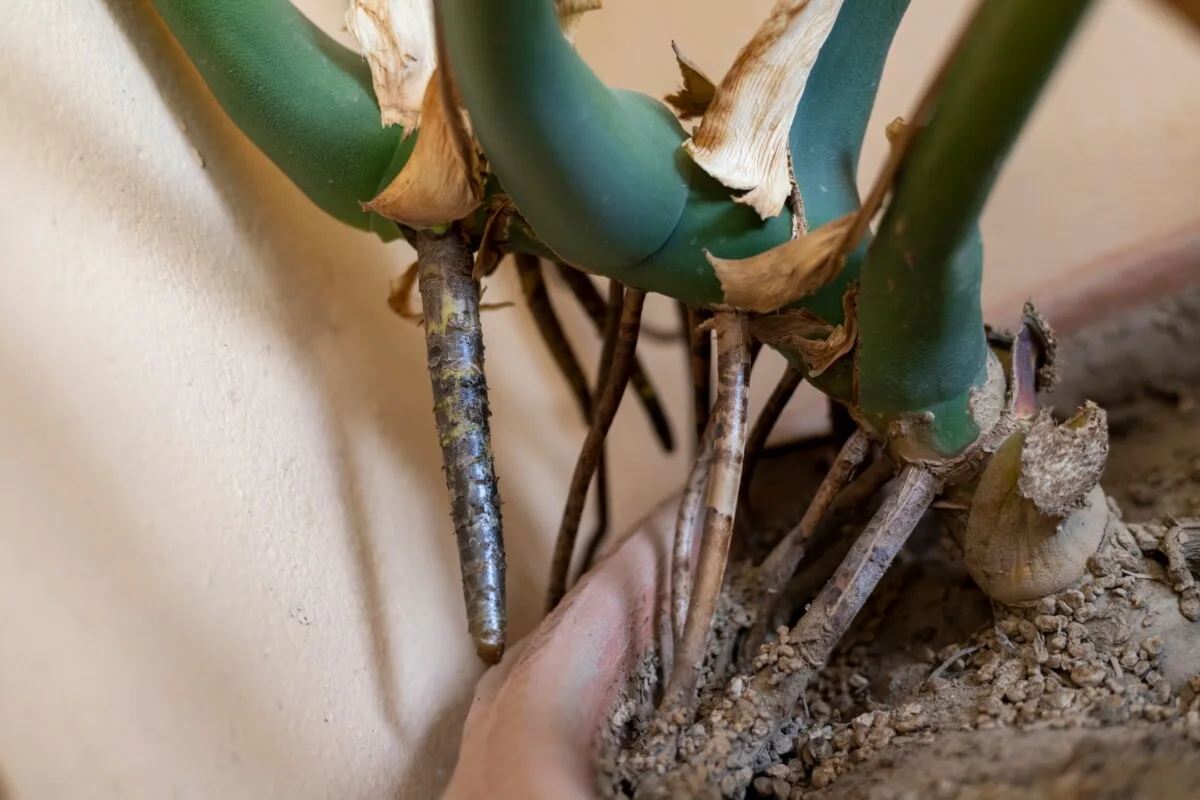
Many of these plants don’t grow “in” soil in the wild, but rather whatever shallow organic matter has collected in the crook of the rock they’re clinging to or the crotch of a tree.
Their roots don’t do well when submersed in heavy soil. Epiphytic plants need extremely lightweight soil with plenty of air pockets so the roots can breathe. Because of this, nearly all houseplants are more susceptible to root rot than the plants in your garden.
So, when we reach for the all-purpose potting soil to repot our favoriteChristmas cactus,orchid, orMonstera deliciosa, we’re asking for trouble.
What Makes a Good Houseplant Mix?
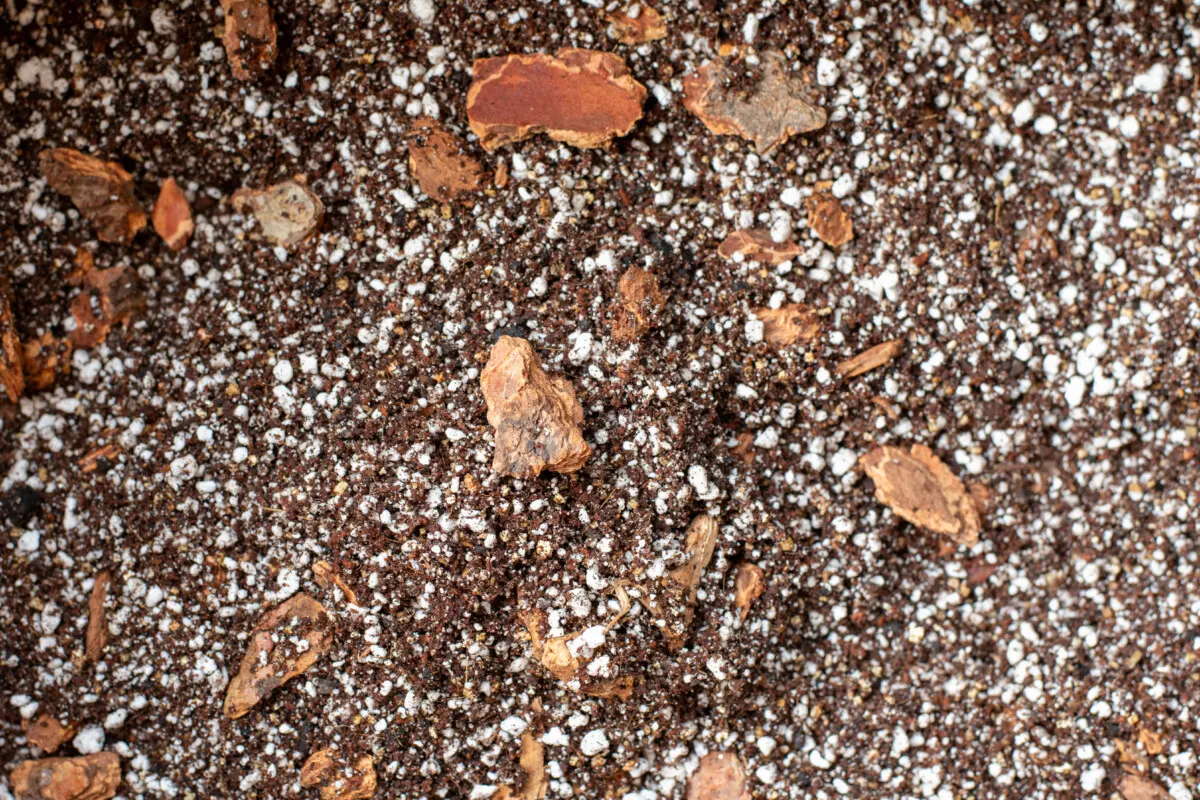
Despite being lighter than garden soil, all-purpose potting mix is still too heavy for these types of plants to thrive.
相反,您应该使用一个盆栽组合设计specifically for aroids or epiphytes. Luckily, there are many good ones to choose from. Most of these will have a much higher percentage of perlite, vermiculite, or both. Many will also include fir bark to help hold moisture without leaving the soil soggy.
A good rule of thumb when choosing a commercial potting mix for my epiphytes is to look for surprisingly light packages. When you pick them up and think, “Oh!” because it’s so light, you’ve probably got a good mix in your hands.
If you’re a diehard houseplant enthusiast, you may want to try mixing your own custom blends.
Remember you want something that will drain quickly (coconut coir or peat moss), filled with tiny air pockets (perlite), but that will still hold moisture (vermiculite, perlite, fir bark or a combination of the three.)
Related Reading:5 Ingredient African Violet Potting Mix
The Problem with Peat
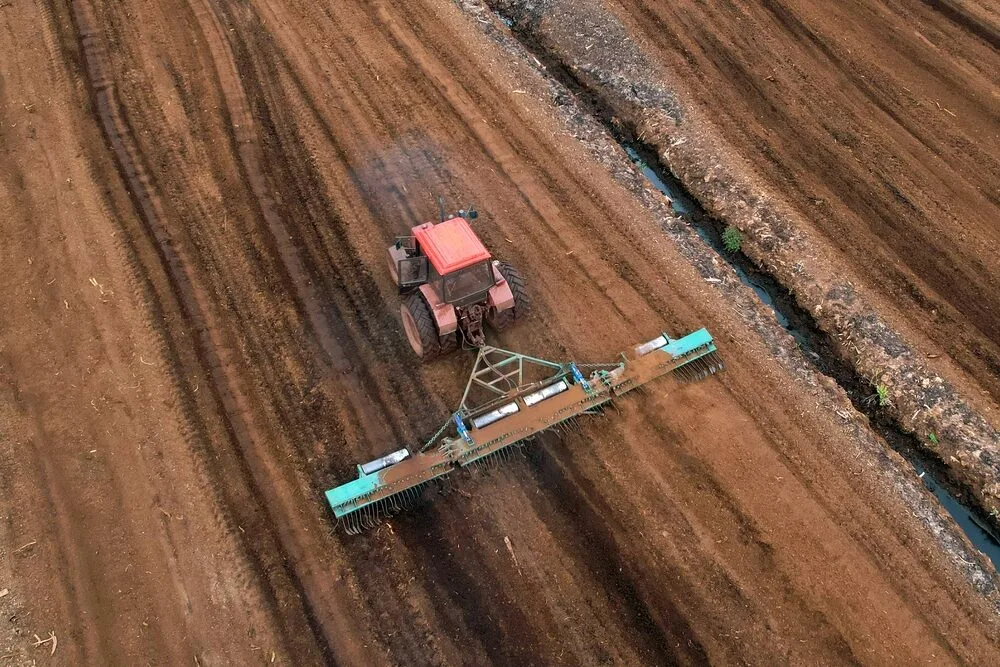
Since its invention, all-purpose potting mix has always contained peat moss. Peat moss was used in horticultural applications well before Cornell mix came along. But it’s only in recent decades that we’ve begun to understand theecological toll harvesting peathas on the environment.
From the permanent destruction of delicate habitats to the release of carbon stored for centuries to the prevalence of forest fires – harvesting peat moss from peat bogs is no longer a good choice for potting mixes.
Look for a houseplant mix that contains coconut coir instead of peat moss for a more sustainable potting mix alternative.
